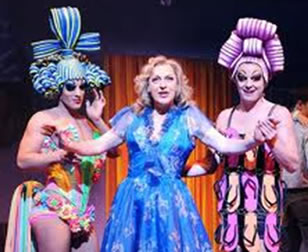Dancers Over 40 ARTS Legacy

Tony Sheldon
Interviewed by Dorothy Stanley What inspired you to become a dancer? As a result of that experience, I ended up with rudimentary dancing skills, and would learn from the choreographers I was working with rather than having a true grounding in it. Meanwhile, I drifted into dramatic acting because my Mother was a Musical Theatre star, and my Dad left dancing to become and Television Producer. So my career was based in the classics, really. I was doing Shakespeare, Chekov, Tom Stoppard, Harold Pinter, etc., but my heart was always with " the dance". I just loved it, -- it was in my genes, and I was a very good "mover". I was always surrounded by dancers, and my friends were dancers. I really learned to dance by osmosis. And when I was cast in musicals, I was very lucky to work with the best choreographers, who all saw something in me. They'd take the time to call me in an hour before anybody else and say "try this step", and I would always be able to figure it out. They wanted to make sure I was on the same level as everyone else. I just had to work that little bit harder. .
Steam Heat from The Pajama Game Who was the most influential person in your career? I can only imagine what it must have looked like -- this 10 year old boy playing all the roles and dancing all over the house. But I thought I was brilliant. People still talk about it to this day-- "Oh, yes, I was there when you sang There's Gotta Be Something Better Than This, did the Rich Man's Frug, and played everyone in the show." I think that's what sent me on the road to my obsession with dance theatre and dancers. As a result I've ended up writing dance shows, directing Cabaret's for dancers, and directing dance shows like PAL JOEY.
What was the most frightening moment (situation) in your career? That was a trial by fire for me -- truly terrifying, because it could have gone so wrong. Luckily, it all went well. That's my most frightening experience. The other scary experience was being cast as Dick in DAMES AT SEA and being the only non-tapper in the show. I was taught the numbers during rehearsals, but I couldn't keep up with the other 5 because they were all so brilliant. However, I had the key to the rehearsal room, and every night at 5 o'clock the cast would leave, and I would stay until 9 at night, in front of the mirror, and teach myself the show so that I would be at their standard by the next morning. But, by God, by opening night I was tapping along with the rest of them. Those two instances are, pretty much, neck and neck as far as "most frightening experience" is concerned. What experience or legacy would you like to pass on to the next generation?
Tony Sheldon (center) in PRISCILLA What is the most memorable moment of your career? What does the future hold for Tony Sheldon? |
Dorothy Stanley
Interviewed by Tony Sheldon What inspired you to dance and who was the most influential person in your career? One summer I was fortunate enough to do ballet at Jacob’s Pillow and we had teachers from Russia, from Africa, it was a phenomenal summer. I remember the Joffrey Ballet was in residence and the only thing I ever saw the prima ballerina do was smoke and eat yogurt. I thought, “Ooh, I don’t think that’s the career I want to pursue.” But I knew I wasn’t a ballerina. I loved the ballet and I’m glad I took it for 17 years but you needed to have a develope up to your ear and I can’t give you six o’clock. I can give you quarter after. At Miss Florence Greenland’s School of Dance in West Hartford, Connecticut they used to do huge recitals in the spring and she had me do a tap solo. There I was, four years old alone on the stage of the Bushnell Theatre which was huge to me, performing “Oh, You Beautiful Doll”. I can still almost remember the combination today. So I just loved tapping from the beginning. I happened to hit Broadway at the right time because there was a lot of tapping going on. But the first quarter of my life was basically music because I played piano and viola and when it came time for college I decided to major in viola because I wouldn’t have as much competition. Dancing was sort of swept aside while I went to school, although during the summer I spent in Vermont I did stock at the Western Playhouse. FINIAN’S RAINBOW and ANYTHING GOES were my first two shows there and I was so happy. What was the most memorable moment in your career? It was kind of a bittersweet moment because I had done Ellie 20 years earlier in a bus and truck tour with Forrest Tucker and Butterfly McQueen, which was quite an experience. The stories there!
Jana Robbins, Dottie Stanley & Anna McNeely in GYPSY at the Paper Mill Playhouse What was the most frightening moment you experienced? Sure enough, we get a week’s notice during the pre-Broadway tryout in Washington and she gets ill on the Tuesday morning with a throat infection and can hardly get through the show that night so they ask me to come in and sing through the show Wednesday morning and at 12.30 that afternoon I was told I was going on for the matinee in front of 4,000 people at the Kennedy Centre without ever having had a rehearsal. They had just added a twelve-verse song the week before and I only knew the first six verses so the conductor said “Dottie, what do you want? Anything. Cue cards in the pit?” I knew that wouldn’t work so I cut out the lyrics and put them on the purse. Luckily, I was supposed to demure in Mr. Warbucks’ presence so I could look down at my purse and sing demurely. I ended up doing five performances before Dorothy came back for closing night but after that experience I never want to see ANNIE again! What will be your legacy to the next generation of dancers and how do you see your experiences with them? There was a teacher named Alan Robb and at the end of the semester he said to me, “Dottie, you have what it takes.” And that’s what I tell kids who have talent. Stick with it. Patience, perseverance, faith, believe in yourself and don’t let anybody tell you that you can’t do it. And I have to say, there are a half dozen or more shows that I’ve been in at the Lincoln Centre Library so if people are interested in seeing what I’ve done, that’s a legacy there, too. | |






